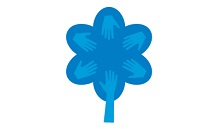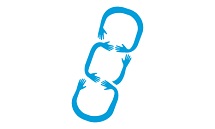Fighting poverty with jobs
If women’s economic empowerment is what we do, women’s entrepreneurship is how we do it. That means training millions of members to run their own microbusinesses. In other words, it means jobs.
Hand in Hand creates jobs in four sequential stages. Group savings and skills training, the first two, aren’t rare. Nor for that matter is microfinance, the third. But where other organisations focus on one or two of these elements, Hand in Hand combines all three – then adds a fourth by connecting entrepreneurs to larger markets.
Jobs break the cycle of dependency, empowering women to speak up and make decisions for themselves and their families. They also help families absorb shocks such as a bad harvest or unexpected medical bill, laying a foundation that supports generations. For every job we create and grow, an average of family members benefit. That’s more children in school, more parents with access to life-saving medicine and more families with sturdy roofs over their heads.
Our job creation model

Step one: setting up Self-Help Groups

Step two: business training

Step three: access to credit

Step four: links to larger markets
Download our strategic plan
Find out where we’re headed, and how we plan to get there. Our strategic plan covers the period from 2017 to 2021.
Our partners
We’re working with partners to create 250,000 jobs in a growing list of countries. Find out who, and where.
Independent reviews
Our donors rightly demand results, backed by hard evidence. Click below to read independent, third-party reviews of our work in Kenya and India.
Talk to us about our approach

Institutions & foundations
Amalia Johnsson Deputy CEOAmalia heads up our programme development team. Before joining Hand in Hand she was Programme Manager at Plan International UK, spent several years at the OECD and worked in finance.
ajohnsson@hihinternational.orgTel: +44 (0)7508 075 601
